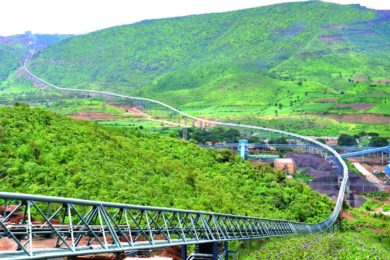The Minerals Council of Australia (MCA) has released a research report prepared by the National Institute of Labour Studies (NILS) of Flinders University on the Labour Force Outlook for the Australian Minerals Sector to 2020. MCA Director of Education and Training, Chris Fraser, said “the ‘super cycle’ of global demand for our products is expected to continue for at least another decade or more and differs from the traditional drivers of commodity cycles as the demand is driven by an underlying structural adjustment in the global economy. Consequently, the strong growth in employment that has been experienced in recent years is projected to continue with growth of a further 68 per cent between 2008 and 2020.”
The research, which was commissioned by the MCA as part of its flagship 2020 Vision project, examined the demand for operational employees (including contractors) at mines and some processing and handling operations for nine of the major commodities. The entire minerals industry labour force was not included in the research.
The research projections show an increasing demand for labour if Australia is to maintain market share in the global commodities markets. Key findings include the following:
- The mining sector will need to employ 86,000 more operational workers, from 128,000 in 2008 to 215,000 in 2020, an increase of 68%
- The largest state increase, by a significant margin, will be in WA with a projected increase of 48,000 persons or 85% growth in demand for labour and representing a 55% share of the total national increase in demand
- By mineral commodity, the largest increases are projected to be in iron ore (21,000 persons or 106%) and coal (19,000 or 53%);
- The greatest increase in the demand for labour in absolute terms by occupational category is projected to be in the ‘Tradespersons’ and ‘Semi-skilled workers’ categories with these accounting for an increase of 31,000 or 36% and 30,000 or 35% respectively of the overall increase
- The current chronic shortage of minerals industry professionals remains pressing with an additional 9,000 people required by 2020.
The national economy-wide projections of the six major occupational categories that are relevant to mines were also examined and:
- The total number of relevant workers in Australia is expected to grow by around one million persons in the 12 years to 2020 or by 15%
- The two fastest growing occupational categories in Australia, by a significant margin, are ‘Managers and Administrators’ and ‘Associate Professionals’ which are projected to grow at 36 and 28% respectively. This contrasts markedly with the national figures for the groups ‘Tradespersons and Related Workers’, ‘Intermediate Production and Transport Workers’ and ‘Labourers and Related Workers’, which are projected to grow at 2, 5 and 4% respectively.
While welcoming the research findings, Fraser said “the research highlights a challenge for the minerals sector. That challenge is to attract, train and retain workers in occupations that are in decline in the economy more generally.
“This will place added pressure on an already tight labour market for minerals sector tradespersons and professionals in remote and regional Australia. The labour market is already running at capacity and this extra demand will mean it is even more critical that Australia’s chronic skills shortages are addressed and the new workers will require considerable training to ensure safety and productivity standards are maintained.
“While the Minerals Council welcomes recent Federal Government initiatives to increase the number of skilled training places and streamline temporary visa applications for skilled immigration, more must be done to expand and reform the vocational education and training system and lift funding for earth science courses in the higher education sector.”
Copies of the report are available on the MCA website at www.minerals.org.au








